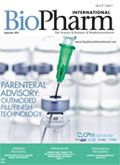When Marketing and Medicine Collide
Steep price increases for a popular drug have created patient and Congressional backlash.
Drug shortages can be caused by manufacturing and quality issues, outdated facilities, resistance by drug companies to update operations, supply issues, raw materials sourcing problems, regulatory actions, pricing pressures, and business decisions to not make products that are not profitable. The skyrocketing price of some drug products, however, is creating another type of drug shortage for individual patients: the lack of accessibility to life-saving drugs of choice.
For consumer products, the buyer has a choice about what they will purchase and at what price. When a new technology-such as an electronic device-is first introduced to the market, the cost is high. Early adopter consumers can make the decision to pay the premium to be the first to get the latest gadget, only to see prices fall as the technology is more widely used and more competitors enter the market. Likewise, consumers drive markets by buying when the price is right, and not buying when the price is too high. When interest rates are low, home buying increases. When rates rise, sales stall.
In these examples, consumers exercised their buying power to influence product pricing. Businesses adjusted to meet consumer demand. When a drug product is in short supply, or is controlled by one producer, however, patients lose their buying power.
Mylan is currently at the center of a growing media storm over the cost of its EpiPen, an autoinjector that dispenses emergency doses of epinephrine. The company increased the price of the product 460% between 2007 and 2015. During the same time, the company’s stock price tripled, and the CEO Heather Bresch’s compensation increased 671% (1). A prescription for a two-pen package of EpiPens now runs about $350; patients are complaining and Congress is requesting that the Federal Trade Commission investigate.
The company enjoyed a dominant market share thanks to an aggressive marketing campaign that targeted parents of children with life-threatening allergies, according to an analysis by Bloomberg. Annual sales grew from $200 million in 2007 to more than $1 billion in 2015 (2). The dominance solidified when Sanofi recalled its Auvi-Q injector in October 2015 due to dosage delivery problems.
Mylan explained its position on its website (3), citing a changing insurance landscape and pointing to the company’s assistance programs, which offer limited financial help to patients.
For many patients the price for this existing product is just too high. In August 2016, the State of Illinois enacted legislation to allow first responders to use vials and syringes to administer epinephrine manually at an estimated cost of $50 per dose. The emergency workers must be trained to administer the drug (4). Having been sold on using Mylan’s life-saving product, parents now face the choice of paying the high price, learning to use an alternative injector, or carrying a syringe and vial wherever they go. That is not the way to build patient loyalty.
References
1. B. Popken, “Mylan Execs Gave Themselves Raises as They Hiked EpiPen Prices,” MSNBC, accessed Aug. 23, 2016.
2. C. Koons, “How Marketing Turned the EpiPen Into a Billion-Dollar Business,” Bloomberg Businessweek, Sept. 25, 2015, accessed Aug. 23, 2016.
3. Mylan, “Mylan’s Commitment to EpiPen (epinephrine injection, USP) Auto-Injector Access,” Press Release, http://newsroom.mylan.com/access, accessed Aug. 23, 2016.
4. WANDTV, “New Law Complete with Life Saving Benefits,” Aug. 22, 2016, accessed Aug. 23, 2016.
Article Details
BioPharm International
Vol. 29, No. 9
Page: 6
Citation:
When referring to this article, please cite as R. Peters, “When Marketing and Medicine Collide," BioPharm International 29 (9) 2016.

Tokyo University of Science Research Team Explores Improved Delivery of Antisense Oligonucleotides
April 18th 2025Using cholesterol-modified oligonucleotides, the research team aims to improve the delivery of antisense nucleotide-based therapies for treating neurodegenerative diseases and brain cancers.